Serkhri Monastery’s full name is Tagtsang Lhamo Serkhri Monastery. “Serkhri” also known as “Triba”, is a title given by the Buddhist community, which means the highest degree and honor granted in Buddhist studies. In Tibetan, “Serkhri” is a transliteration of the term “gser phye,” which means “golden throne” or “Fa-tai” (equivalent to the abbot of a monastery).
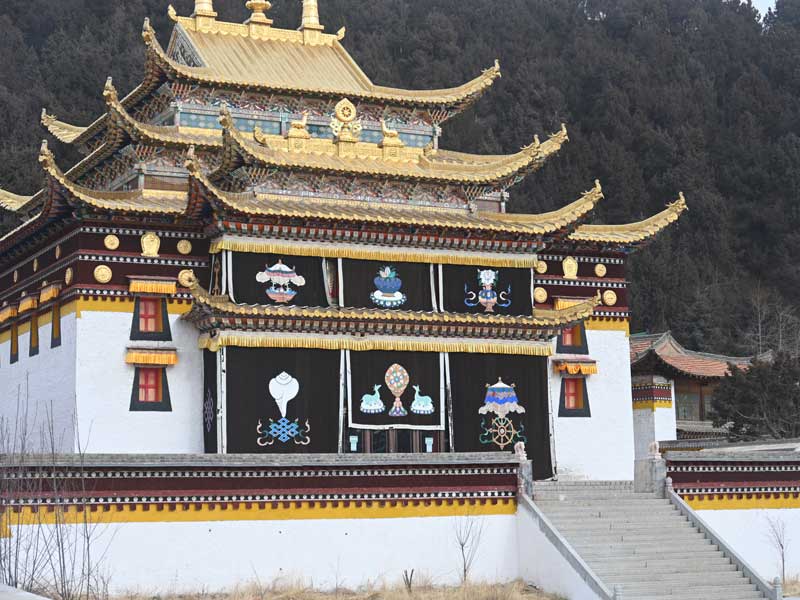
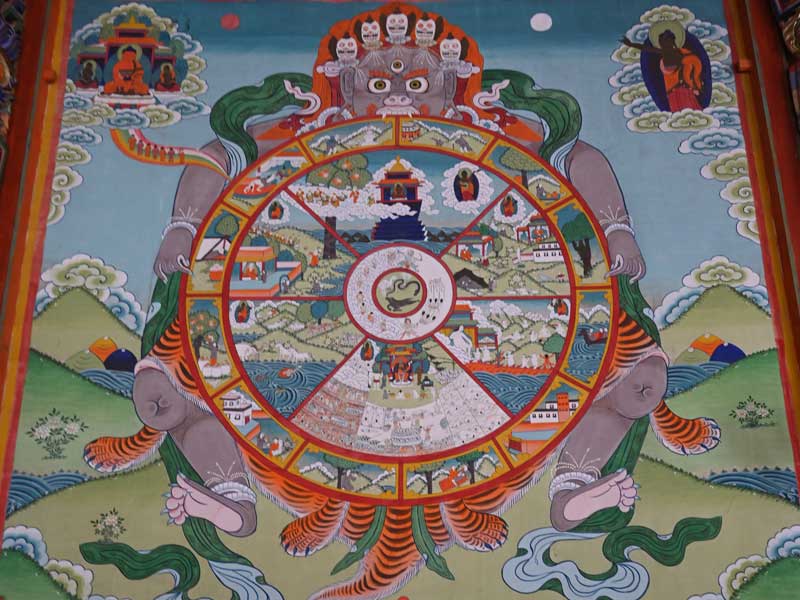
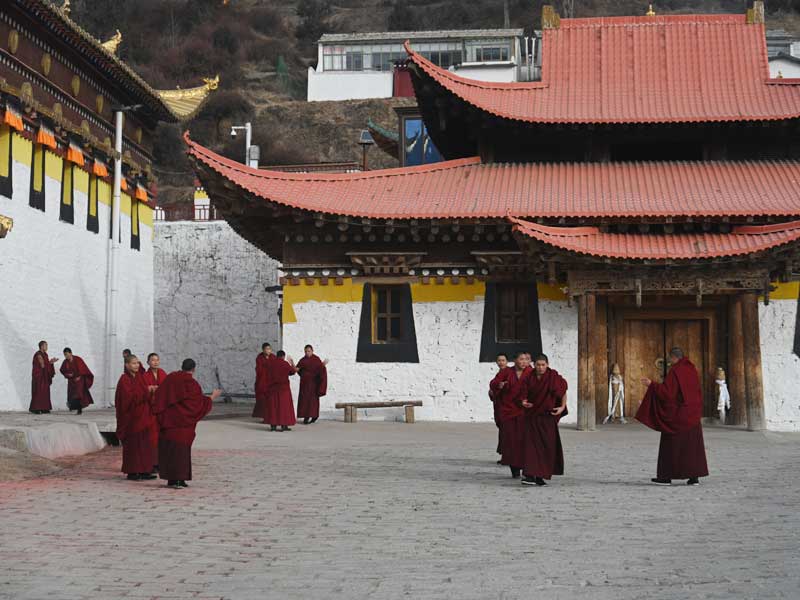
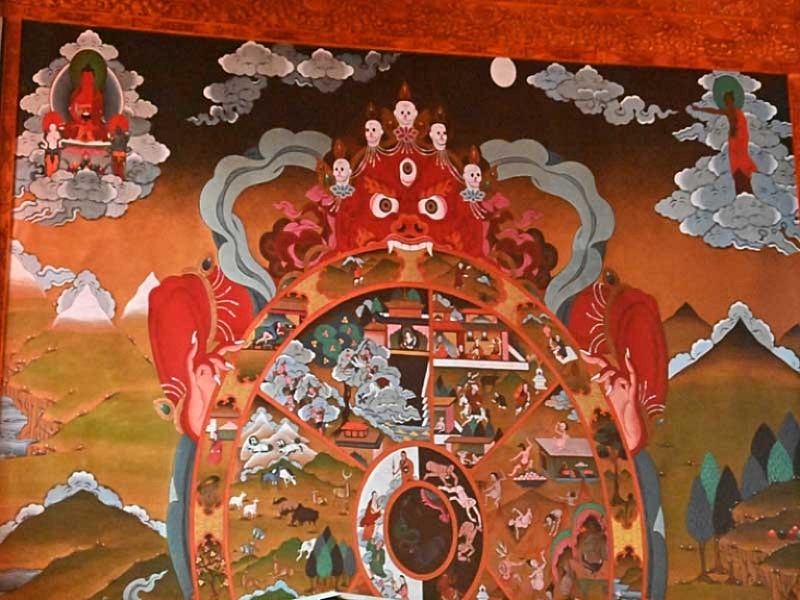
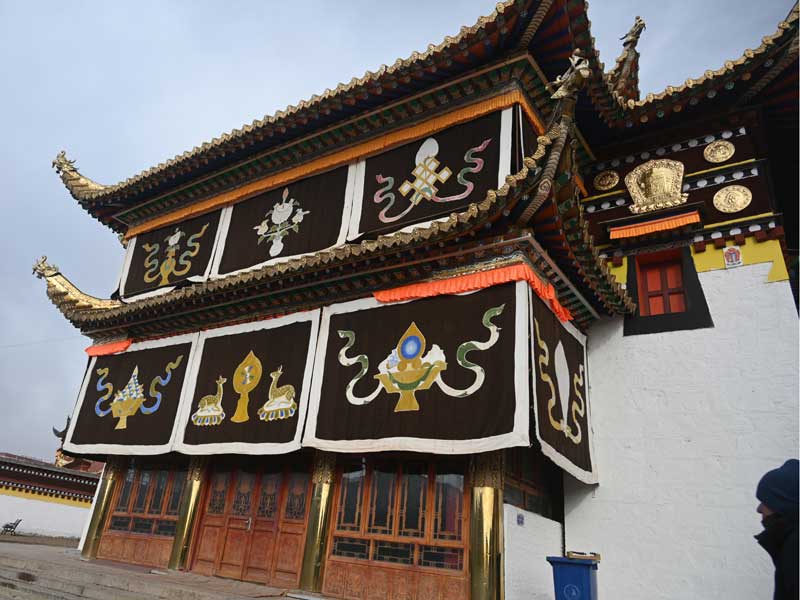
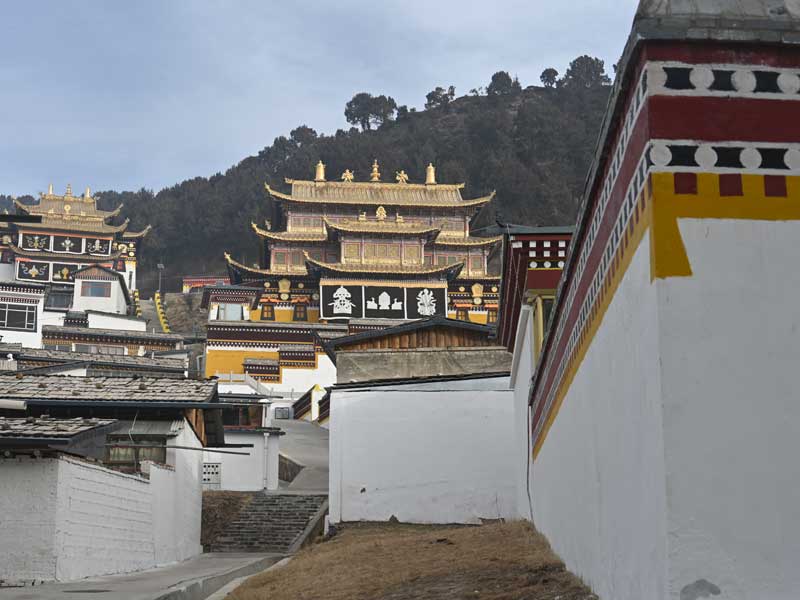
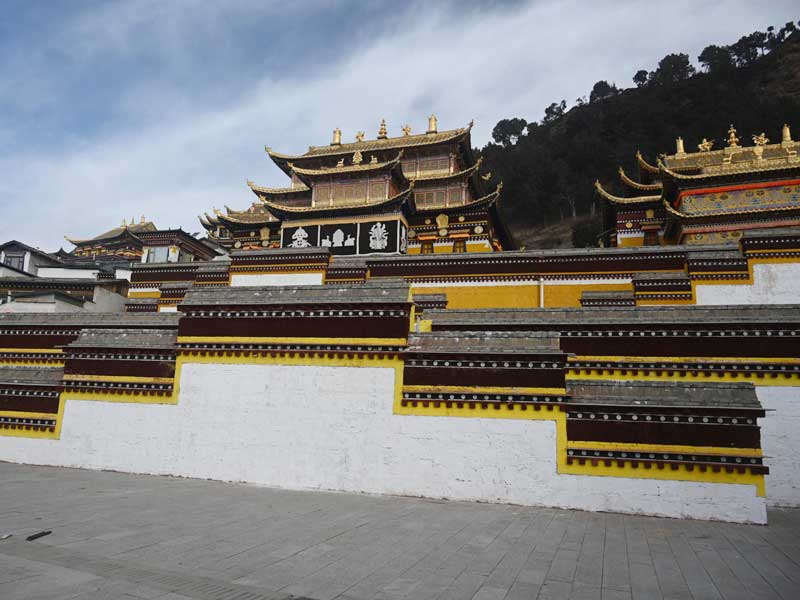
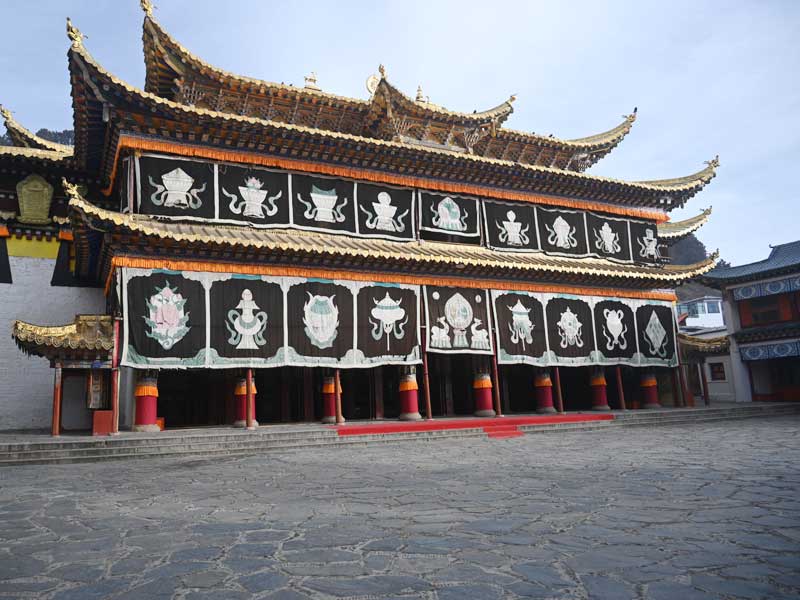
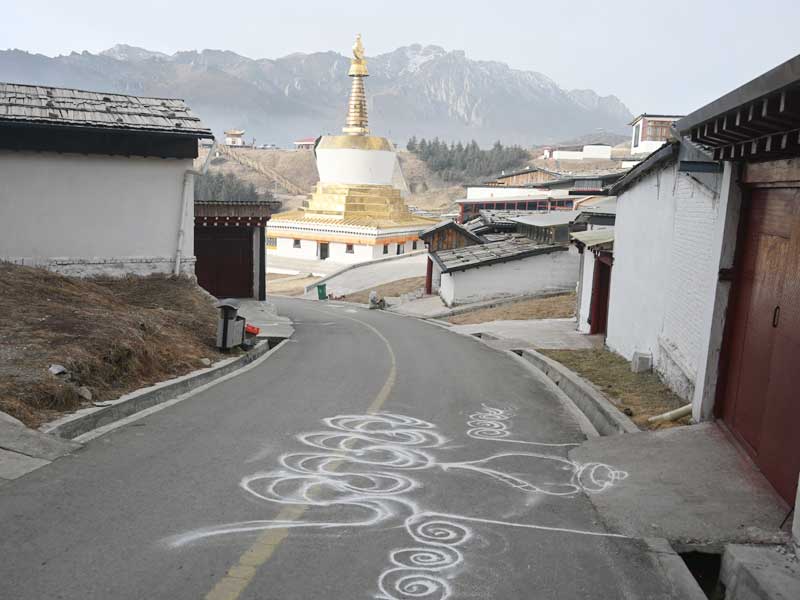
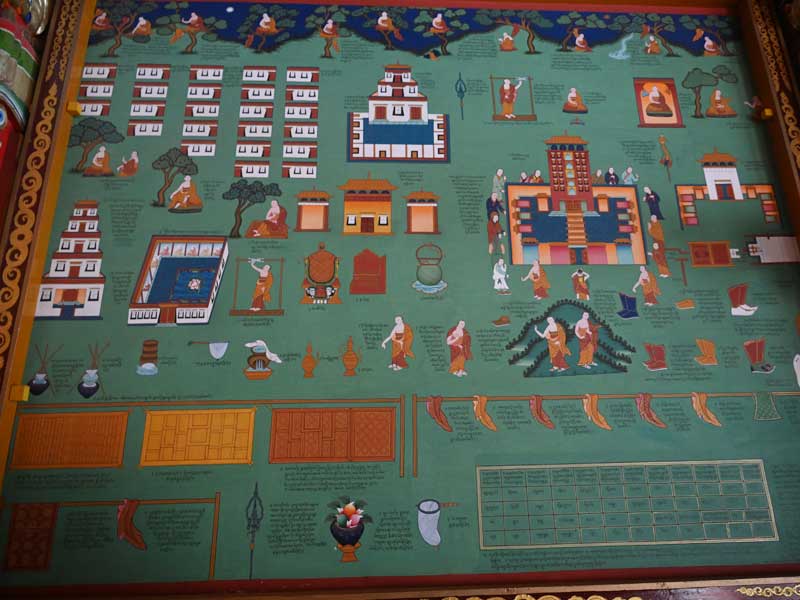
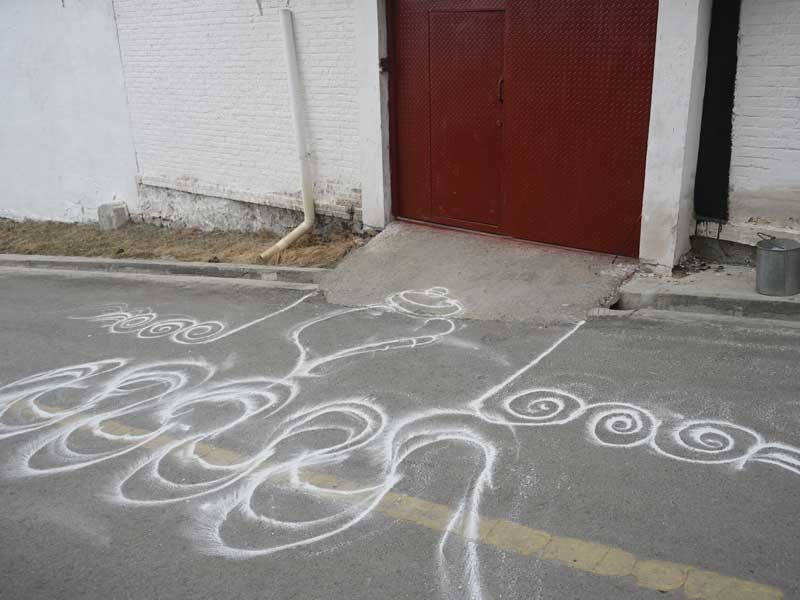
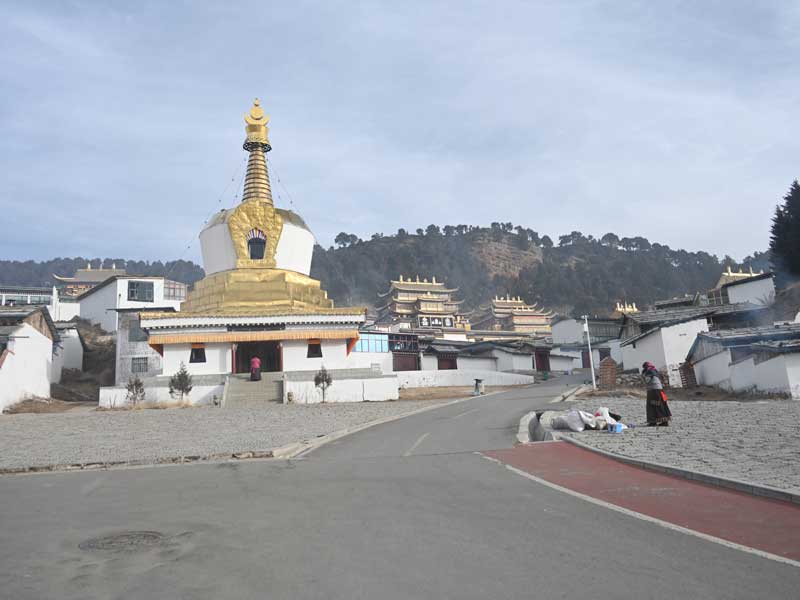
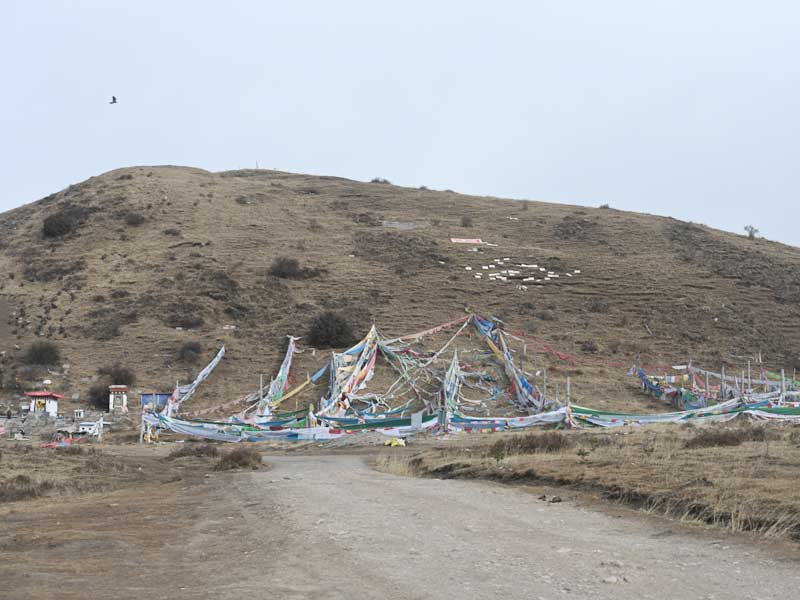
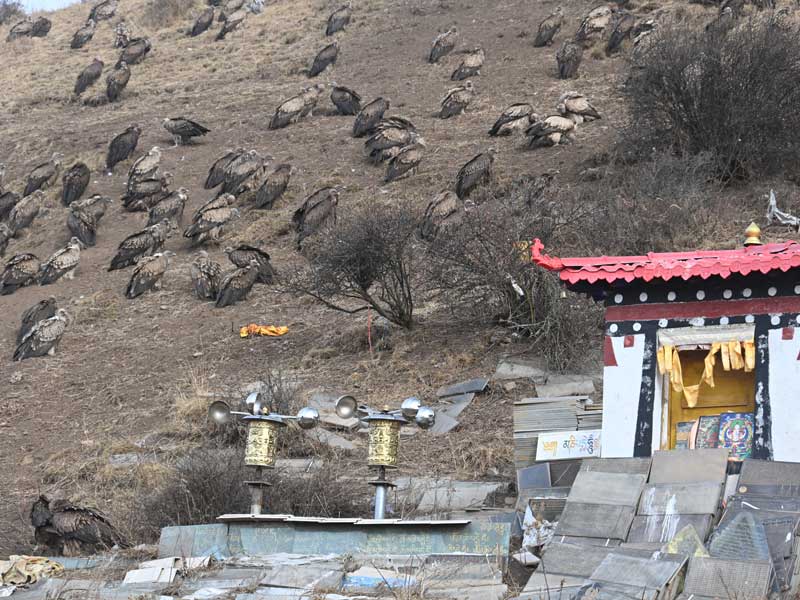
Brief
Serkhri Monastery was founded in 1748 AD. Its founder, the 1st Serkhri, was Jangtsen Gelsang, who at the age of 55, served as the 53rd Serkhri of the Ganden Monastery in Tibet for 8 years. During his tenure, he extensively propagated Buddhist teachings, engaged in debates, and authored significant works, earning great respect from the monastic community. In 1747 AD, he established the Serkhri Monastery in Langmusi.
Collection of Cultural Relics
The main sacred objects enshrined in the monastery include over 4,000 Buddha statues crafted from gold, silver, and copper, and adorned with various precious materials such as coral, pearls, and turquoise, obtained from India, Nepal, China, Mongolia, and Tibet. Among them, the statue of Maitreya Buddha is the most prominent, towering nearly two stories high. In his belly, it houses the ancient tongue relic of the self-manifested guardian deity brought from the Ganden Monastery, as well as the “Heavenly Vajra Staff” of the “Dharma,” the robe of the Master Tsongkhapa, and a golden Vajra unearthed during the construction of the Buddha hall, all believed to possess great blessings. Additionally, there are statues sculpted by the living Buddha “Pakpa Kawa,” including the “Black Enemy Yamantaka” and the main deity figure painted with nose blood by “Jamyang Wo,”. Furthermore, there are precious relics such as the purple-gold Vajradhara statue cast according to the Gelugpa tradition by “Chikin Nangka Sangpo,” and the hand-sculpted Mahakala and Chakrasamvara statues by the 2nd Serkhri — “Lhozang Jangtsen Sangge.”
The most rare and precious relic is the physical stupa of the 1st Serkhri, Jangtsen Sangge, enshrined in the Golden Tile Hall. Whether from its historical establishment or the sacred items it houses, the “Tagtsang Lhamo Serkhri Monastery” can be said to be a large-scale Tibetan Buddhist monastery in the Amdo region, second only to the Ta’er Monastery and Labrang Monastery.
Brief history
Serkhri Monastery once had ten affiliated temples and two meditation centers, with 70 abbots serving over the years. In 1958, there were more than 500 monks, making it the religious, cultural, economic, and political center of the local.
Unfortunately, the monastery was not spared during the “Ten Years of Turmoil” and was completely destroyed. Countless sacred objects and precious relics stored within the temple were lost, including the physical stupa of Serkhri Jangtsen Sangge, which was burned to ashes. The heavy losses incurred can never be compensated for.
Before 1958, the temple had five colleges, including the colleges of Wensi, Tantric, Kalachakra, and medicine, with nearly twenty halls, including the Great Sutra Hall and the Golden Tile Hall, as well as two meditation centers. The faithful were spread throughout the regions of Luqu, Ala, Zhuoni, Diebu, and Jiangcharewa in Sichuan.
Reconstruction
The monastery was demolished in 1958 and during the Cultural Revolution. It was approved for reconstruction in May 1981. On September 22 of the same year, more than thirty monks erected a tent on the ruins of the original site as a temporary chanting hall and held a consecration and chanting ceremony, marking the beginning of the reconstruction of the monastery. The four major colleges were gradually restored, and there are now 140 monks. The main buildings of the temple include the Great Sutra Hall, the Maitreya Buddha Hall, and the physical stupa of the Buddha.
Serkhri Monastery Sky Burial
Sky burial in the Gannan region is only conducted at the Langmusi and is open to visitors. The sky burial platform is located more than 300 meters northwest of the ” Serkhri Monastery” and is one of the largest sky burial platforms in the Amdo region, with a history of over 400 years.
The mountain top is adorned with colorful prayer flags, and there are flocks of vultures circling above, considered as the embodiment of deities in the hearts of the Tibetan people. The sky burial platform does not exude the kind of gloom and horror one might imagine. Here, death not only signifies the end but also symbolizes a new beginning, carrying connotations of rebirth and transcendence. It is the final return for the religious faithful in the Tibetan area, as they use sky burial as a specific way to demonstrate the law of human return to nature.



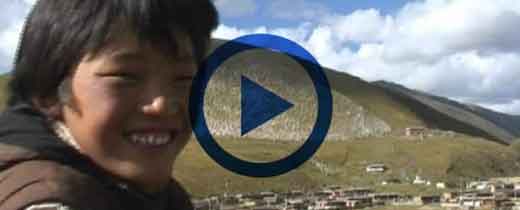
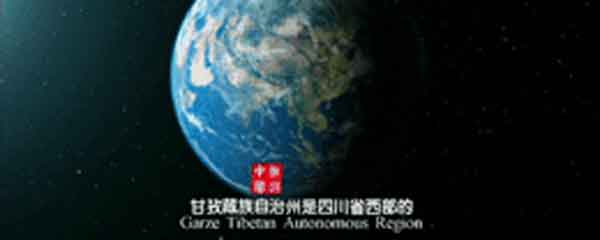
Leave a Reply